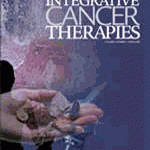Kalman Applbaum
Pharmaceutical Marketing and the Invention of the Medical Consumer
PLOS Medicine, 2003, 92 (4), e189

t is often said that leading drug companies now spend more on marketing than on research and development. While such contemporary pharmaceutical marketing practices are sometimes believed to be a modern phenomenon, they are in fact a direct continuation of 19th-century patent medicine advertising. Nostrum-mongers, as the novelist Henry James dubbed them, are noted in the history of advertising as having been the leading spenders on, and foremost originators of, advertising technique. Nostrum sellers pioneered print advertising, use of trademarks and distinctive packaging, pull or demand-stimulation strategies, and even the design and commissioning of medical almanacs that functioned as vehicles for promotion of disease awareness. Henry James's psychologist brother, William James, was so exasperated by the medical advertisement abomination that in 1894 he declared that the authors of these advertisements should be treated as public enemies and have no mercy shown.






